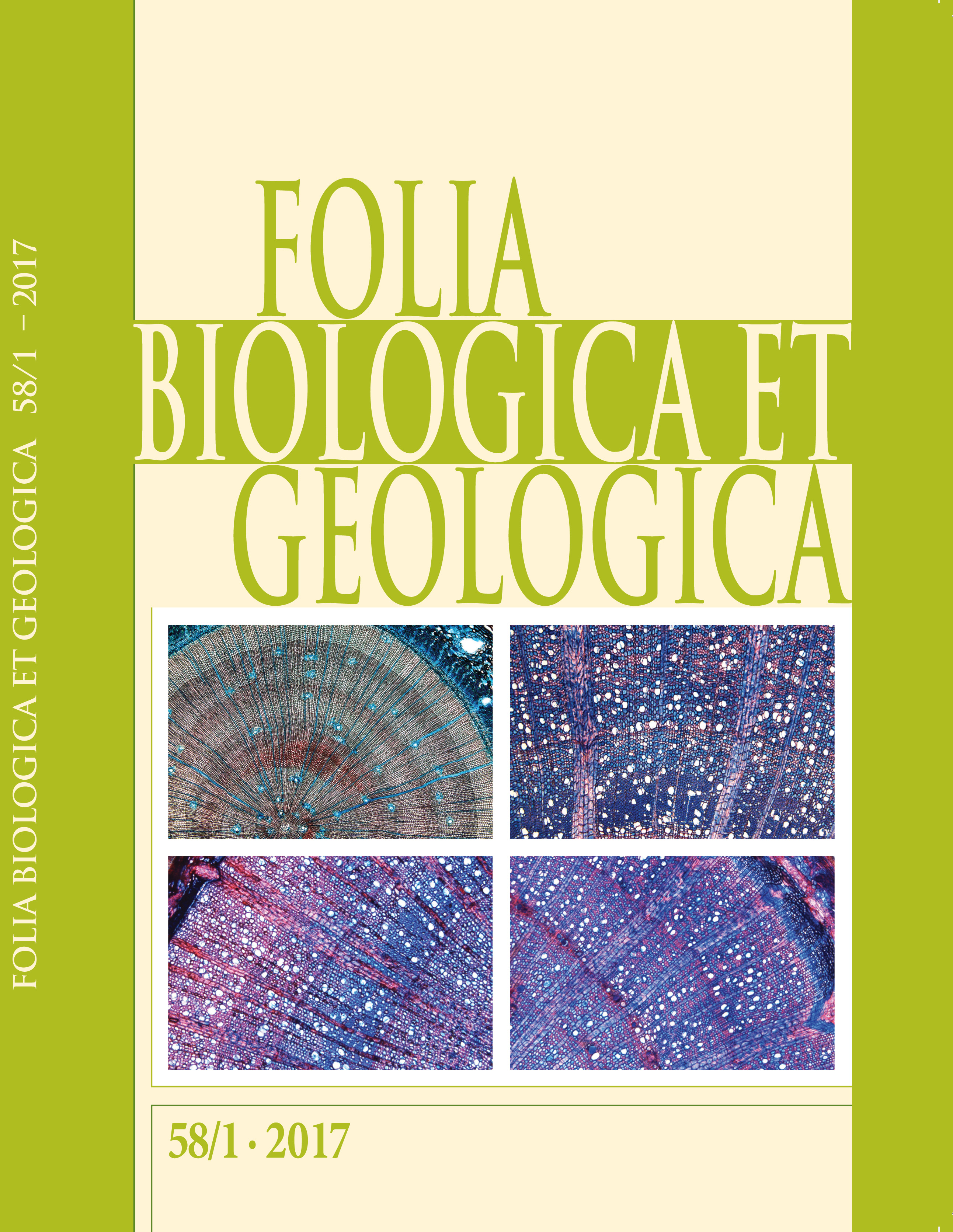Cultivable bacterial microbiota from choanae of free-living birds captured in Slovenia / Kultivabilna bakterijska mikrobiota iz sapišč prosto¬živečih ptic, ujetih v Sloveniji
DOI:
https://doi.org/10.3986/fbg0024Abstract
We have analysed the structure of cultivable choanal microbiota from free-living birds in relation to bird diet, its richness and the relative number of opportunistic bacteria acquired from the environment. For this purpose, we have taken choanal swabs from 25 free-living birds representing 13 different bird species captured in Slovenia. From the grown cultures, 98 bacterial colonies were isolated and their 16S rRNA genes sequenced. Most of the bacteria belonged to the phylum Actinobacteria (52 %), Proteobacteria (31 %), Firmicutes (15 %) and Bacteroidetes (4 %). Thirty-two percent of sampled birds were colonized by known human opportunists and 44 % of birds by at least one known plant pathogen. Hierarchical clustering of the analyzed microbiota grouped the birds according to their predominant diet. The richness of choanal microbiota from birds feeding mainly on insects was poorer compared to the birds feeding on diverse animal and plant material. The study has shown that the free-living birds carry an important reservoir of opportunistic human and plant pathogenic bacteria in their upper respiratory tract. To get a deeper insight into its composition, a bigger pool of birds will have to be analyzed in the future.
Keywords: birds, microbiota, choanae, pathogenic bacteria, diet
Sestavo kultivabilne bakterijske mikrobiote v sapiščih prostoživečih ptic smo analizirali z vidika vpliva prehrane, bogatosti mikrobiote in prisotnosti oportunističnih bakterij. Petindvajsetim prostoživečim pticam, ki so bile ujete v Sloveniji in so pripadale 13 vrstam, smo odvzeli bris sapišča. Po nacepitvi brisov na mikrobiološka gojišča in gojenju, smo izolirali 98 bakterijskih kolonij in jim določili nukleotidno zaporedje gena za 16S rRNK. Večina izoliranih bakterij je pripadala deblu Actinobacteria (52 %), Proteobacteria (31 %), Firmicutes (15 %) in Bacteroidetes (4 %). Pri približno eni tretjini ptic (32 %) smo iz sapišča izolirali vsaj eno oportunistično bakterijsko vrsto, ki lahko povzroča okužbe pri ljudeh. Pri slabi polovici ptic (44 %) pa smo v sapišču našli vsaj eno bakterijsko vrsto, ki lahko okuži rastline. Z metodo hierarhičnega združevanja smo pokazali, da imajo ptice s podobno prehrano, podobno bakterijsko mikrobioto sapišč. Ptice, ki se prehranjujejo pretežno z žuželkami so imele manj bogato mikrobioto kot ptice, ki se prehranjujejo z bolj raznoliko živalsko in rastlinsko hrano. Raziskava je tudi pokazala, da so zgornja dihala prostoživečih ptic pomemben rezervoar oportunističnih bakterij, ki lahko okužijo ljudi in rastline. Da bi dobili globji vpogled v sestavo mikrobiote zgornjih dihal, bi v prihodnosti morali povečati število analiziranih ptic.
Ključne besede: ptice, mikrobiota, sapišče, patogene bakterije, prehrana
Downloads
Published
Issue
Section
License
Authors who publish with this journal agree to the following terms:- Authors retain copyright and grant the journal right of first publication with the work simultaneously licensed under a Creative Commons Attribution License that allows others to share the work with an acknowledgement of the work's authorship and initial publication in this journal.
- Authors are able to enter into separate, additional contractual arrangements for the non-exclusive distribution of the journal's published version of the work (e.g., post it to an institutional repository or publish it in a book), with an acknowledgement of its initial publication in this journal.
- Authors are permitted and encouraged to post their work online (e.g., in institutional repositories or on their website) prior to and during the submission process, as it can lead to productive exchanges, as well as earlier and greater citation of published work (See The Effect of Open Access).




